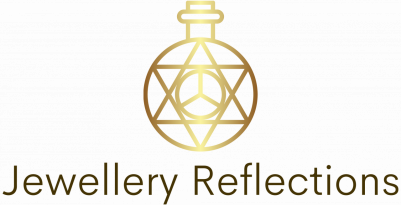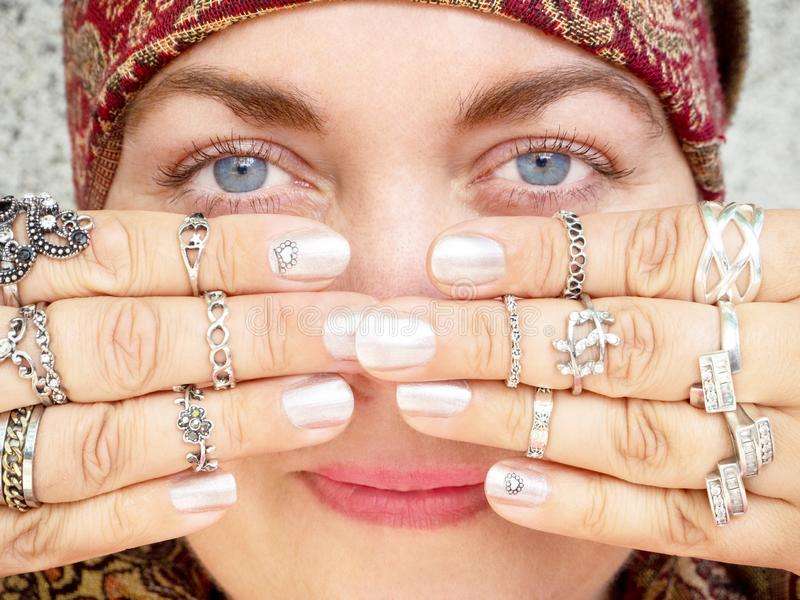In the world of exquisite gemstones, diamonds reign supreme. They adorn the most coveted jewelry pieces, especially engagement rings. Yet, today choosing the diamond has become more complicated. Apart from the quality and shape one has to consider whether to buy lab-grown diamonds or natural diamonds. What exactly is the difference?
This post will help you make an informed choice.
Table of Contents
Understanding Diamonds
Natural Diamonds are formed deep within the Earth’s mantle typically at depths of 90 to 120 miles over millions of years.
Carbon atoms undergo immense pressure and heat. They then crystallize into the sparkling gemstones that we adore today.
Diamonds are the hardest natural substance known to man, scoring a perfect 10 on the Mohs scale.
According to Wikipedia ‘The scale was introduced in 1812 by the German geologist and mineralogist Friedrich Mohs’

The clarity of a diamond refers to the absence of internal or external flaws.
Diamonds come in a range of colors. The most valuable ones being colorless or near-colorless.
Check out this 14k white gold round diamond halo bridal set currently available from Helzberg Diamonds with a hefty $ 1,000 discount!
Where are natural diamonds mined?
There are approximately 50 diamond mines in the world. They are concentrated in South and West Africa, Australia, Canada, and Russia.

There are two internationally recognized laboratories that certify diamonds for their quality and authenticity.
One is the Gemological Institute of America (GIA). The other is the International Gemological Institute (IGI).
What proportion goes into the jewelry sector?
Nearly 80% of mined diamonds are used industrially. Thus you already get a sense of how rare the quality diamonds are!
Check out this diamond ring from James Allen where you are able to choose from earth-created diamonds and lab-created diamonds at a very attractive price. If you start from the diamond rather than the setting it will give you the choice.
Clarity, Carat, Color, and Cut-the 4 ‘c’s.
Natural diamonds boast unique imperfections that gemologists call “inclusions.” These imperfections contribute to their character and are classified according to clarity grades. The color scale, ranging from D (colorless) to Z (light yellow or brown), determines a natural diamond’s hue. Carat, on the other hand, measures its weight and size, making natural diamonds a benchmark for these attributes.

For more information about diamond shapes check out my post:
Diamond Studs For Men: Do They Make Men More Attractive?
What are lab-grown diamonds?
Instead, lab-grown diamonds, are meticulously crafted by replicating the natural growth conditions. The gems are created with two different techniques. One is called High-Pressure High-Temperature (HPHT). The other is Chemical Vapor Deposition (CVD). They mimic the natural process but in a controlled environment.
They are also known as synthetic or man-made diamonds

When were lab-grown diamonds first produced?
Lab-grown diamonds were first produced in the 1950s. The early efforts to create synthetic diamonds were driven by both scientific curiosity and industrial applications. General Electric (GE) was one of the pioneering companies in this field. In 1955, GE announced the successful production of diamonds. They were made through a high-pressure, high-temperature (HPHT) process. These early lab-grown diamonds were quite small. They were not suitable for gemstone use, but they had industrial applications, such as cutting tools.
Over the decades, advancements in technology and research led to the development of larger lab-grown diamonds. They were also more suitable for use in Jewelry. The diamonds are produced using tiny carbon seeds of pre-existing diamonds.
Today, lab-grown diamonds are widely available in various sizes and qualities. They are used not only for industrial purposes but also as gemstones in jewelry.
Brilliant Earth was one of the first to sell lab diamonds back in 2012. They have a huge inventory of lab-grown diamonds. Check out this Waverly Halo Diamond Ring:
Myth: Quality and Purity of Lab-grown diamonds are inferior?
Lab-grown diamonds tend to have fewer imperfections. They are normally categorized within the higher clarity grades. Their color grading is typically in the D to J range. Carat weight is controlled during the manufacturing process giving more precision in size and weight.
Brandon Cook is the Director of Marketing for Clear Origin, a lab-grown diamond company. He has stated ‘’ chemically, optically, and gemologically, lab-grown and mined diamonds are the same.’
Check out James Allen’s breakthrough collection of lab-grown diamonds on sale at great prices by clicking the yellow button below:
Ethics and Sustainability: A Crucial Perspective
Aside from their physical allure, diamonds carry ethical and environmental weight.
The Natural Diamond Dilemma
Natural diamonds, at times, have been associated with conflict and unethical mining practices. The Kimberley Process Certification Scheme was established to combat the trade of “blood diamonds.” Although it has made strides in improving ethical sourcing, concerns persist.
Check out my post: SUSTAINABLE JEWELRY: FOR THE ENVIRONMENTALLY CONSCIOUS SHOPPER
Lab-Grown Diamonds: Ethical Radiance
In contrast, lab-grown diamonds are heralded for their ethical sourcing. They are conflict-free and often come with transparent origin information. They provide peace of mind to conscientious consumers. Their environmental footprint is significantly smaller, consuming less energy and water during production.
Another great player in the online diamond market is Blue Nile. Check out this vintage-inspired Zac Posen 14k white gold ring on sale at a promotional price
Customization
Lab-grown diamonds offer unparalleled customization options. Consumers can order diamonds with specific shapes, sizes, colors, and even inclusions for unique jewelry designs. Larger diamonds and fancy colors are now possible at a popular price.
This level of personalization was challenging to achieve with natural diamonds.
The Price tag: A matter of Consideration
The price tag of a diamond will often dictate the choices consumers make.
Natural diamonds, with their rarity and geological history, tend to come with a hefty price tag. However, their value often appreciates over time, making them an investment for the future.
A better-than-average quality one-carat natural diamond will cost you online around $3000. For a particular colorless cut, shape, and weight the sky is the limit.
Whereas you can find a one-carat lab-created diamond at less than $800. Here production costs influence the price rather than geological scarcity.
In his September “State of the Diamond Market Report,” industry analyst Paul Zimnisky observed, “As of Q3 2023, a sampling of 1- to 3-carat lab-diamonds offered at retail are priced at an average 80 percent discount to that of equivalent-quality natural diamonds.”
Check out this 14k white gold navette leaf diamond wedding ring at a give-away price from James Allen:
Making the Choice: Natural or Lab-grown
When it comes to choosing between the two, apart from the price tag, other factors come into play
Some are drawn to the cultural significance and the historic attraction of natural diamonds. Others opt for lab-grown diamonds valuing their ethical sourcing and affordability.
Lab-created diamonds cannot be distinguished from natural diamonds with the naked eye.
Blue Nile has an excellent format for comparing the shape, the carat, the clarity, the color, and the price of both earth-created and lab-created diamonds. Check it out here:

Will Lab-grown Diamonds Pass a Diamond Tester?
Absolutely Yes! They have the same carbon composition and thermal conductivity as natural diamonds and will test positive!
Have fun using this diamond tester from Amazon.
Balancing Act: Budget vs. Ethics
For many in the past, the decision was a delicate balance between budget considerations and ethical beliefs. Lab-grown diamonds offered a middle ground. They allow individuals to embrace the beauty of diamonds without compromising their principles.
Now the market is changing.
Where is the market going?
According to Edahn Golan, an independent diamond industry analyst, ‘by value, the share of loose lab-grown diamonds doubled from an average of 8.3% in 2020 to 17.3% in 2022’.
He also states that there has been a steep rise ‘from an 11.6% share in January 2020 to a remarkable 46.6% in February 2023.’That is almost a 50% share!
According to ‘The Knot’ due to the lower price of lab-grown diamonds, the average size of engagement ring stones has grown from 1.5 to 1.8 carats.
Thus the sales of natural diamonds have been falling sharply.
For more information about market trends read my post:
A Comprehensive Guide to Gold Rings for Timeless Elegance and Lasting Style!
Will Luxury Brands use Lab-grown Diamonds?
National Jeweler Online announced that Prada will start using Lab-grown diamonds in their next 2024 collection
Other luxury brands such as Tag Heuer have already started using them in their $360,000 watches!
Celebrity Endorsements of natural diamonds
Natural diamonds have a long history of being associated with glamour and luxury. Many iconic celebrities from the past have embraced and promoted natural diamonds. For example, Hollywood legends like Marilyn Monroe and Elizabeth Taylor were known for their love of exquisite natural diamond jewelry. They contributed to the allure of these gems.
The British royal family’s use of natural diamonds in engagement rings and tiaras has garnered significant attention and admiration. One only has to look at King Charles III’s recent coronation to understand the legacy of Natural Diamonds.
The engagement rings of celebrities like Kim Kardashian, Beyoncé, and Prince William to Kate Middleton have generated immense interest in natural diamonds.
Environmentally Conscious Celebrities
Some celebrities are environmentally conscious. They have chosen to endorse lab-grown diamonds, directly or indirectly, due to their eco-friendly attributes. Personalities like Meghan Markle, Gigi Hadid, and Emma Watson have been photographed with lab-grown diamonds.
Do natural diamonds have better resale value?
According to the Wall Street Journal ”polished natural diamond prices are down about 27% in 2023 from their peak in 2022.” This affects the re-sale value too.
At the end of the day, you can expect to lose at least 40-50% of the value if you try to re-sell your diamond ring. This applies to both natural and lab-grown.
However, diamonds are not normally bought as a short-term investment as the price can fluctuate according to the political situation.
Conclusion
Both natural and lab-grown diamonds possess their own unique appeal. Whether you opt for the geological marvels that have graced the Earth for millennia or the ethically crafted gems of the modern age, the allure of diamonds remains undeniably timeless.
The 3 major international diamond laboratories GIA, HRD, and IGI provide diamond grading reports certifying that lab-grown diamonds have exactly the same optical, physical, and chemical characteristics as mined diamonds with the point of origin being the only difference.
However, it seems that the market has spoken. In the coming years, the sales of lab-grown diamonds will overtake mined diamonds.
Another change will be the size of the diamond in your ring. According to ‘The Knot’ due to the lower price of lab-grown diamonds, the average size of engagement ring stones has grown from 1.5 to 1.8 carats.
Hopefully, the shift will help not only the diamond industry but also the planet.
 Jewellery Reflections jewelry buying and information blog
Jewellery Reflections jewelry buying and information blog












4 comments
Pingback: Sustainable Jewelry: The Future of Jewelry manufacturing
Pingback: Glamorous Engagement Ring Trends coming through in 2024
Pingback: Diamond Earring Studs For Women: Minimal Chic or Maximal Glam
Pingback: Toi Et Moi Rings: A Unique Twist on Traditional Rings